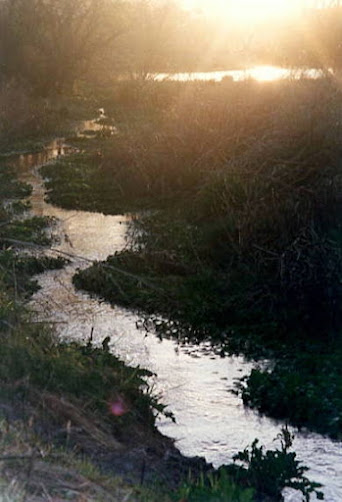Good Medicine
 |
| Roadrunner adult male |
Thank goodness a real roadrunner can’t do that to Arivaca
Road, or we’d have even more potholes to avoid when driving on it… but they can
run at up to 20 mph, which is nearly as fast as famous sprinters Florence
Griffith-Joyner at 22 mph and Usain Bolt at 28 mph. Their speed gives them a big advantage when tracking their
favorite prey, which includes venomous lizards and scorpions, as well as
rattlesnakes. With rattlers, they
often hunt in tandem with another roadrunner: one distracts the snake by jumping around and flapping its
wings while the other sneaks up, then pins its head and bashes it against a
rock. Yowza!
Throughout our 3 winters here, there has been a pair of Greater Roadrunners visiting our garden off and on, sometimes foraging together and sometimes with one foraging and the other “keeping a watchful eye” nearby. The rock "mountain" in the middle of our seasonal pond is a favorite surveillance spot for them.
However, a couple of weeks ago, I noticed the male perched on the corner of our 3ft chain link fence, which sits atop a rock wall. At first I thought he was “sunbathing”, which all Roadrunners do to warm up after a cold night, spreading their wings and raising their back feathers to expose their heat-absorbing black skin. (Check out this cool video of a sunbath!) With a closer look though, I saw the female Roadrunner down in the shrubs below the rock wall, and assumed she was foraging, but after this went on for quite a while, I realized that they might be starting a nest. After they left, I took a look around that area and down in the nearby wash, but it doesn’t appear they got very far with any nest-building, so this behavior may have just been a part of their annual pair bonding. I’ll keep looking though!
Roadrunner pairs mate for life, and renew their bonds each
spring with courtship “dances” and calls. The male makes a distinct co-coo-coo-coo-coooooo
in a series of downward slurring notes, which can be heard up to a quarter-mile
away, to attract a mate. If
another male answers by coming close, they will both try to intimidate each
other by erecting their crest and revealing a bright orange patch of skin
behind their eyes. When there is
no rival around to divert attention from their mate, both male and female will snap
the mandibles of their bills together to make a sound like fast castanets, and
make a sharp whining noise. Once
you hear these courtship sounds, you will recognize them instantly even if you
can’t see the roadrunners that are making them!
My experience has been that the males are bolder than the
females when it comes to human contact, but that may be true only of the pair
that visits our garden. One
example of this was during an outdoor eggs-and-toast breakfast one morning,
when the male came right up to the edge of our sandstone patio to investigate
our meal. Then it jumped up onto the edge of the patio and started towards the
table, which startled me so much that my legs jumped and moved my chair, which scared
it back onto the lawn. Knowing
they like to prey on other bird’s eggs, I thought it might just try to finish
off my plate!
The Hopi and other Pueblo tribes believe that roadrunners are medicine birds and protect against evil spirits. Their unusual X-shaped footprints are used as sacred symbols to ward off evil, partially because the X shape of their tracks (due to the unusual physiology of having two toes pointing forward and two toes pointing back) conceals which direction the bird is headed and thus throws malignant spirits off-track. Pretty cool, eh? Stylized roadrunner tracks have also been found in the rock art of Anasazi and Mogollon cultures.
Knowing this makes me hope even more that a roadrunner pair will come back to nest here, successfully raise their young, and leave their good medicine Xs wherever they go!
Check out these websites I researched for this
article:
http://www.native-languages.org
Photo credits:
Roadrunner by Mark Wilson, public domain
Roadrunner pair by Emily Bishton
Roadrunner on fence by Emily Bishton
Roadrunner track by Kim A. Cabrera, Desert Moon Design
Photo credits:
Roadrunner by Mark Wilson, public domain
Roadrunner pair by Emily Bishton
Roadrunner on fence by Emily Bishton
Roadrunner track by Kim A. Cabrera, Desert Moon Design





